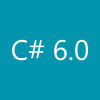Microsoft Visual Studio 2017 version 15.7.4 (latest version: 15.7 Update 4) is a new servicing update for Visual Studio 2017 installation. If you are running Visual Studio 2017, update to the latest version 15.7.4 to resolve a bunch of issues that has been fixed by Microsoft.
To get the updates, either check for update notification within the IDE or launch the Visual Studio Installer. Check out this blog post to know what has been fixed in this update build.
